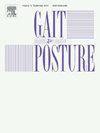20-80岁成年人自我报告的正常跑步机步行速度的重测信度和变异性
IF 2.2
3区 医学
Q3 NEUROSCIENCES
引用次数: 0
摘要
地面行走速度表现出良好到极好的可靠性。然而,在跑步机行走过程中,自我报告速度的内部测试-重测试可靠性和可变性尚未被量化。此外,关于年龄对地上行走速度变异性影响的文献给出了不同的结果。目的:本研究评估了在跑步机步行速度方案中自我报告的正常速度的会话内测试-重测试可靠性和变异性,以及这些测量在20-80岁成年人中的变化。方法收集59名参与者(20-80岁)的跑步机正常步行速度,分为两组(分别为六组和三组)。针对整个样本和每个年龄组(按十年分组)的四组自我报告速度,推导了类内相关系数(ICC)、测量标准误差(SEM)和Bland-Altman图。结果多数ICCs信度为良至优(ICCs≥0.80),其中SEMs≤ 0.45 km/h,≤ 12 %。在每组分析的速度中,最早和最新的自我报告速度贡献了最大的变化。与中年人相比,老年组的可靠性降低,变异性增加,年轻组的可靠性也同样低。结论:研究结果揭示了跑步机行走中自我报告的正常速度的大小、模式、可靠性和可变性的来源。此外,跑步机行走时自我报告速度的可靠性和可变性可能受到年龄和/或行走速度的影响。这些发现可能对研究和临床设置有实用价值,因为在这些应用中,可靠地识别正常的步行速度,同时最小化时间负担是重要的考虑因素。本文章由计算机程序翻译,如有差异,请以英文原文为准。
Test-retest reliability and variability of self-reported normal treadmill walking speeds in adults aged 20–80 years old
Background
Overground walking speeds show good to excellent reliability. However, intra-session test-retest reliability and variability of self-reported speeds during treadmill walking have not been quantified. Additionally, literature surrounding the effects of age on variability of overground walking speeds has presented mixed findings.
Objective
This study evaluated intra-session test-retest reliability and variability of self-reported normal speeds during a treadmill walking speed protocol, and changes in these measures across adults aged 20–80 years old.
Methods
Self-reported normal treadmill walking speeds were collected in two bouts (six and three speeds, respectively) during one session from 59 participants (20–80 years old). Intraclass correlation coefficients (ICC), standard errors of measurement (SEM), and Bland-Altman plots were derived for four sets of self-reported speeds, for the full sample and each age group (grouped by decade).
Results
Most ICCs presented good to excellent reliability (ICCs ≥ 0.80), with SEMs ≤ 0.45 km/h and ≤ 12 %. The earliest and latest self-reported speeds in each set of analyzed speeds contributed the most variation. The oldest groups demonstrated decreased reliability and increased variability compared to adults in the middle age groups, with similarly low reliability among the youngest group.
Conclusion
Results provide insight into the magnitude, patterns, and sources of reliability and variability in self-reported normal speeds during treadmill walking. Furthermore, reliability and variability of self-reported speeds during treadmill walking may be affected by age and/or walking speed. These findings may have utility for research and clinical settings, for applications in which reliably identifying normal walking speeds while minimizing time burden is an important consideration.
求助全文
通过发布文献求助,成功后即可免费获取论文全文。
去求助
来源期刊

Gait & posture
医学-神经科学
CiteScore
4.70
自引率
12.50%
发文量
616
审稿时长
6 months
期刊介绍:
Gait & Posture is a vehicle for the publication of up-to-date basic and clinical research on all aspects of locomotion and balance.
The topics covered include: Techniques for the measurement of gait and posture, and the standardization of results presentation; Studies of normal and pathological gait; Treatment of gait and postural abnormalities; Biomechanical and theoretical approaches to gait and posture; Mathematical models of joint and muscle mechanics; Neurological and musculoskeletal function in gait and posture; The evolution of upright posture and bipedal locomotion; Adaptations of carrying loads, walking on uneven surfaces, climbing stairs etc; spinal biomechanics only if they are directly related to gait and/or posture and are of general interest to our readers; The effect of aging and development on gait and posture; Psychological and cultural aspects of gait; Patient education.
 求助内容:
求助内容: 应助结果提醒方式:
应助结果提醒方式:


